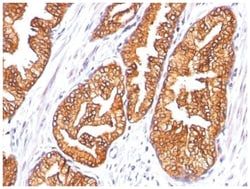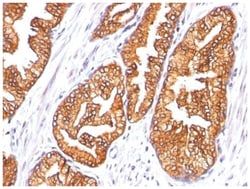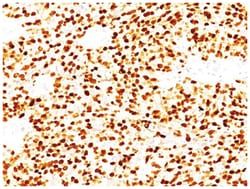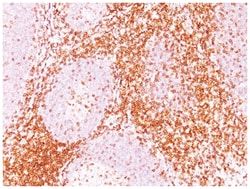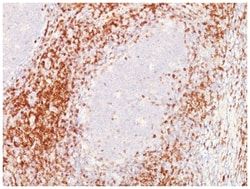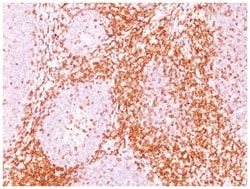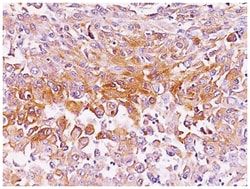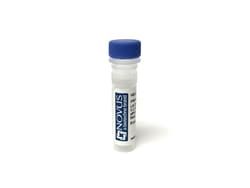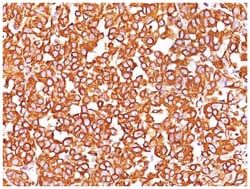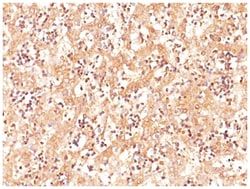TYRP1 Mouse, Clone: SPM456, Novus Biologicals™
Mouse Monoclonal Antibody
Manufacturer: Fischer Scientific
The price for this product is unavailable. Please request a quote
Antigen
TYRP1
Dilution
Flow Cytometry 0.5-1ug/million cells, Immunocytochemistry/Immunofluorescence 1-2ug/ml, Immunohistochemistry-Frozen 0.5-1ug/ml
Classification
Monoclonal
Form
Purified
Regulatory Status
RUO
Formulation
PBS with 0.05% BSA. with 0.05% Sodium Azide
Gene Alias
b-PROTEIN, CAS25,6-dihydroxyindole-2-carboxylic acid oxidase, Catalase B, CATB, EC 1.14.18, EC 1.14.18.-, EC 1.14.18.1, Glycoprotein 75, GP75DHICA oxidase, Melanoma antigen gp75, TRP-1, TRPTYRP, tyrosinase-related protein 1TRP1, TYRRP
Gene Symbols
TYRP1
Isotype
IgG2a κ
Purification Method
Protein A purified
Test Specificity
It reacts with a 75kDa melanocyte-specific gene product, identified as Tyrosinase-related protein-1 (TRP-1). It is involved in melanin synthesis. TRP1 is present on the melanosomal membranes of melanoma, normal melanocytes and nevi.Recent evidence suggests that TRP-1 is involved in maintaining stability of tyrosinase protein and modulating its catalytic activity. TRP-1 is also involved in maintenance of melanosome ultrastructure and affects melanocyte proliferation and cell death.
Clone
SPM456
Applications
Flow Cytometry, Immunocytochemistry, Immunofluorescence, Immunohistochemistry (Frozen)
Conjugate
Unconjugated
Host Species
Mouse
Target Species
Human, Mouse
Gene Accession No.
P17643
Gene ID (Entrez)
7306
Immunogen
SK-MEL-23 cells
Primary or Secondary
Primary
Content And Storage
Store at 4C.
Molecular Weight of Antigen
75 kDa
Description
- TYRP1 Monoclonal specifically detects TYRP1 in Human, Mouse samples
- It is validated for Flow Cytometry, Immunocytochemistry/Immunofluorescence.
